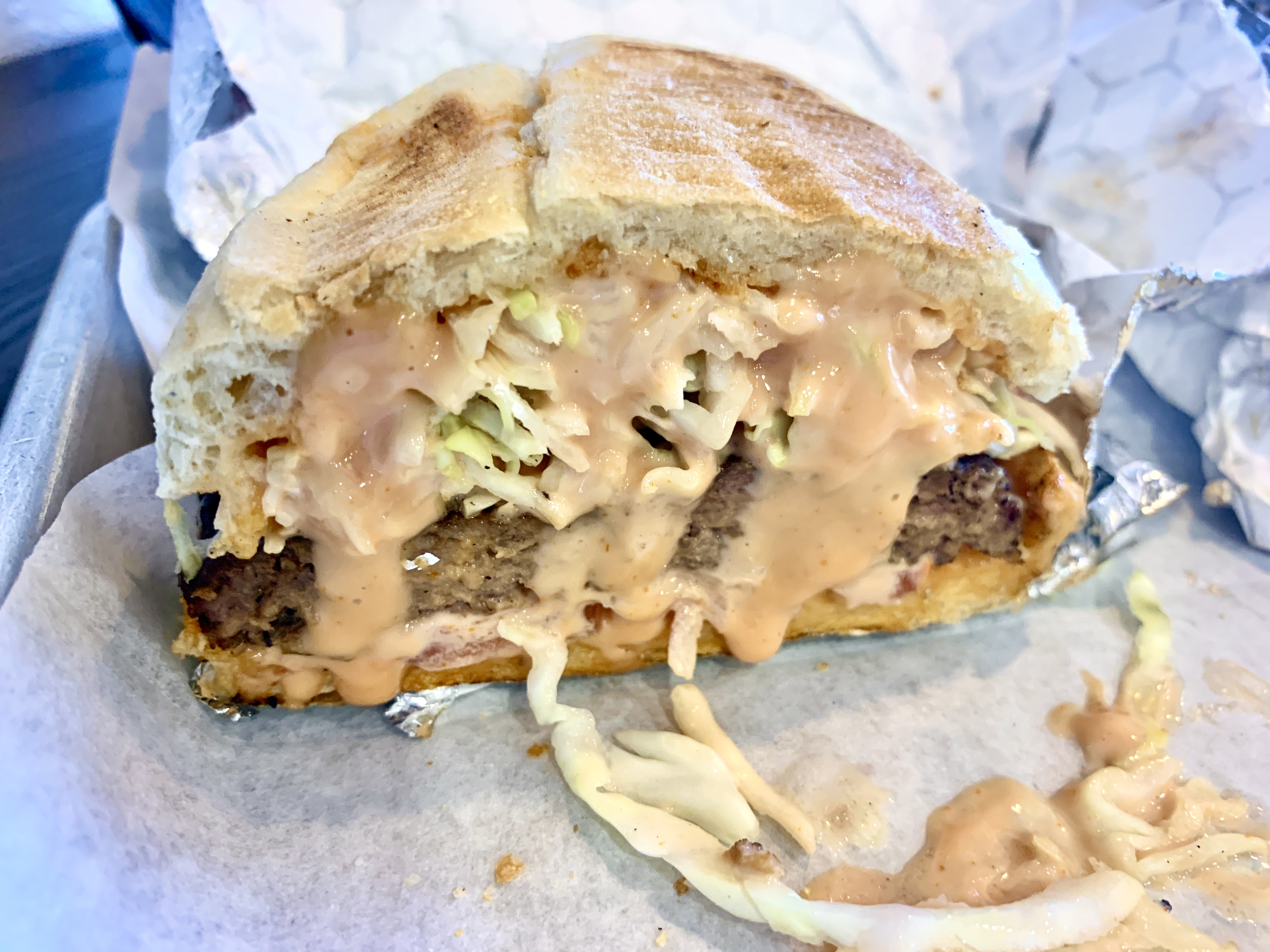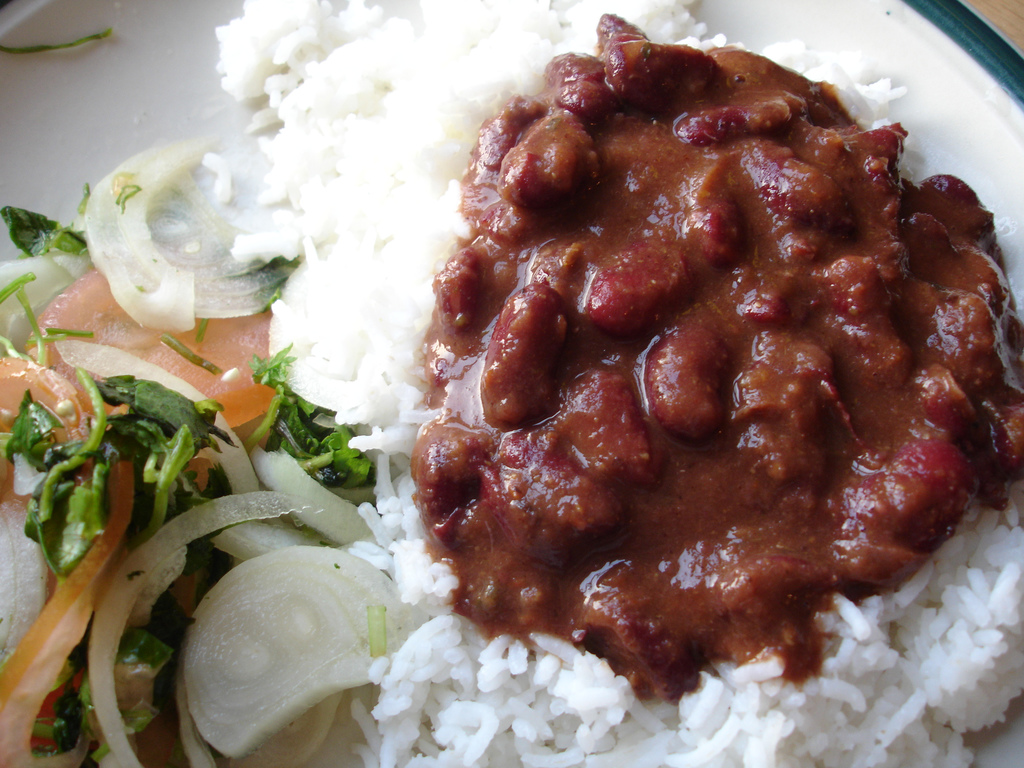|
Moro De Guandules
Moro de guandules (Moorish pigeon peas) is a dish from the Dominican Republic served on holidays. The dish is typically cooked with long-grain rice, celery, bell peppers, red onion, garlic, oregano, thyme, cilantro, tomato paste, chicken bouillon, and occasionally olives and capers. When coconut milk is added it is known as ''moro de guandules con coco''. The dish is of Samaná, Dominican Republic origin where coconut milk is highly used in many traditional dishes. The dish is mild and flavorful. It is typically paired with roasted meat. See also * Arroz con pollo - Rice, chicken, and peas dish * Arroz con gandules - Puerto Rican one pot yellow-rice, pork, and pigeon pea dish * Platillo Moros y Cristianos - Cuban one pot black bean and rice * Gallo pinto * Pabellón criollo * Rice and beans * Rice and peas Rice and peas (or peas and rice) is a traditional food within the West Indian Caribbean islands. The 'peas' are traditionally pigeon peas, but more often substituted with ... [...More Info...] [...Related Items...] OR: [Wikipedia] [Google] [Baidu] |
Cuisine Of The Dominican Republic
Dominican cuisine is made up of Spanish, indigenous Taíno, Middle Eastern and African influences. As in Spain, the largest, most important meal of the day is lunch. Its most typical form, nicknamed ''la bandera'' ("the flag"), consists of white rice, red beans and meat (beef, chicken, pork, or fish), sometimes accompanied by a side of salad. Dishes and their origins The Dominican Republic was formerly a Spanish colony. Many Spanish traits are still present in the island. Many traditional Spanish dishes have found a new home in the Dominican Republic, some with a twist. African and Taíno dishes still hold strong, some of them unchanged. All or nearly all food groups are accommodated in typical Dominican cuisine, as it incorporates meat or seafood; grains, especially rice, corn (native to the island), and wheat; vegetables, such as beans and other legumes, potatoes, ''yuca'', or plantains, and salad; dairy products, especially milk and cheese; and fruits, such as oranges, ... [...More Info...] [...Related Items...] OR: [Wikipedia] [Google] [Baidu] |
Arroz Con Pollo
''Arroz con pollo'' (Spanish for ''rice with chicken'') is a traditional dish of Latin America, closely related to paella. It typically consists of chicken cooked with rice, onions, saffron, and a potential plethora of other grains or vegetables. In the Dominican Republic it is alternately called locrio de pollo, and in Saint Martin it is called lokri or locreo. There is some debate as to whether it originated in Spain or Puerto Rico. Many Puerto Ricans note that arroz con pollo cannot be made without beer and annatto oil, and saffron is no substitute. Beer and annatto are rarely used in Spanish cooking and never in arroz con pollo there. Annatto is frequently used in Puerto Rican cooking especially in rice dishes like arroz con gandules (rice with pork and pigeon peas) and arroz con maiz (rice with corn and sausage). Beer is used in many Puerto Rican dishes like pollo guisado (braised stewed chicken) and asopao de pollo (chicken rice stew). Many Puerto Rican rice dishes are g ... [...More Info...] [...Related Items...] OR: [Wikipedia] [Google] [Baidu] |
Arroz Con Gandules
Arroz con gandules is a combination of rice, pigeon peas, and pork, cooked in the same pot with sofrito. This is Puerto Rico's national dish along with roasted pork. Preparation This dish is mainly served during Christmas season or for special occasions. The ''sofrito'' is the most important part of seasoning the rice. In Puerto Rican cooking sofrito, which is used as a base in many recipes, typically consists of the following ingredients: '' Recao'', cilantro, onions, garlic, ''aji dulce'' peppers, cubanelle peppers, and roasted tomatoes. Sofrito is blended into a watery or paste consistency. The idea is for the rice to absorb the sofrito for maximum flavor. Tomatoes are typically roasted the day of as the rest of the ingredients can be prepared together days in advance. The tomatoes are squeezed through a fine strainer discarding the seeds and skin. The day of cooking the first step is cooking the pigeon peas if they are being prepared from dried form or fresh, although the ca ... [...More Info...] [...Related Items...] OR: [Wikipedia] [Google] [Baidu] |
Platillo Moros Y Cristianos
is a traditional Cuban dish served both in homes and in restaurants. It is the Cuban version of rice and beans, a dish found throughout Latin America, the Caribbean, and in the Southern United States. Etymology means 'Moors and Christians'. refers to the black beans, and to the white rice. The name of the dish is a reference to the African Muslim governance of the Iberian Peninsula from the (early 8th century) through the (15th century). Preparation Onions, garlic, and bell pepper are commonly used as a . To this sofrito are added the white rice and pre-boiled black beans, as well as the water that the beans were boiled in. Other seasonings such as oregano and bay leaf are often added to the dish to give additional flavor. are different from simple in that the beans and rice are cooked in the same pot instead of separately. is another term for the dish, but is used more commonly to refer to the similar dish with red beans that is traditionally eaten on the eastern par ... [...More Info...] [...Related Items...] OR: [Wikipedia] [Google] [Baidu] |
Gallo Pinto
or Royal Spanish Academy y Association of Academies of the Spanish Language (2014)«gallopinto» ''Diccionario de la lengua española'' (23.ª edición). Madrid: Spain. . Consulted October 19, 2018. is a traditional dish from Central America. Consisting of rice and beans as a base, gallo pinto has a long history and is important to Nicaraguan and Costa Rican identity and cultures, just as rice and beans variations are equally important in many Latin American cultures as well. The beans in gallo pinto are quickly cooked until the juice is almost consumed, then combined with prepared rice and other ingredients such as cooked bell peppers, coriander, chopped onions, and garlic. Etymology Gallo pinto means "spotted rooster" in Spanish. The name is said to originate in the multi-colored or speckled appearance that results from cooking the rice with black or red beans. The term may also be shortened depending on the region. History It is uncertain and disputed which country is the ... [...More Info...] [...Related Items...] OR: [Wikipedia] [Google] [Baidu] |
Pabellón Criollo
Pabellón criollo () is a traditional Venezuelan dish, the local version of the rice and beans combination found throughout the Caribbean. It is a plate of rice, shredded beef in stew and stewed black beans. Variants Common additions include '' tajadas'' (fried plantain slices) or a fried egg, and both of these variants have acquired slang names. A ''pabellón con barandas'' (''baranda'' is Spanish for guard rail) is served with tajadas because the long plantain slices placed on the sides are humorously considered to be keeping the food from falling off from the plate. A ''pabellón a caballo'' (''a caballo'' is Spanish for horseback riding) means with a fried egg on top, as though the egg were "riding" the dish. Besides these two main variants, people also add other things to the dish such as granulated sugar on the beans, Queso Palmita over the beans or hot sauce over the meat. The shredded beef can be replaced by '' chigüire'', shredded caiman meat or even freshwater fish d ... [...More Info...] [...Related Items...] OR: [Wikipedia] [Google] [Baidu] |
Rice And Beans
Rice and beans, or beans and rice, is a category of dishes from many cultures around the world, whereby the staple foods of rice and beans are combined in some manner. The grain and legume combination provides several important nutrients and many calories, and both foods are widely available. The beans are usually seasoned, while the rice may be plain or seasoned. The two components may be mixed together, separated on the plate, or served separately. Description The dish usually consists of white or brown rice accompanied by cooked brown, red or black dry beans (typically '' Phaseolus vulgaris'' or ''Vigna unguiculata'') and seasoned in various ways. This dish is also commonly served with sides of stewed chicken, pork, beef, potato salad, boiled potatoes, and many other sides from many different cultures. In many areas, beans and rice are often served side by side rather than combined. Either way, they may be considered a meal, frequently with a topping of meat or chicken. Meat ... [...More Info...] [...Related Items...] OR: [Wikipedia] [Google] [Baidu] |
Rice And Peas
Rice and peas (or peas and rice) is a traditional food within the West Indian Caribbean islands. The 'peas' are traditionally pigeon peas, but more often substituted with kidney beans, and the dish is frequently served with curry goat. In 1961, Frederic G. Cassidy made note that the dish had been referred to as Jamaica's coat of arms. Anglo-Caribbean Rice and peas is the mainstay of the cuisines of The Bahamas, Jamaica, Barbados and many other English-speaking Caribbean islands. In The Bahamas, it is known as peas n' rice, from which the Bahamian folk song " Mamma don't want no Peas n' Rice and Coconut Oil" is named. The dish is made with rice and any available legume, such as kidney beans, pigeon peas (known as gungo peas), or cowpeas, the combination of grain and a legume forming a complete protein; compare rice and beans. Gungo peas are particularly associated with Christmas. The peas are boiled with pimenta seeds and garlic until tender. Scotch bonnet pepper, thyme, sca ... [...More Info...] [...Related Items...] OR: [Wikipedia] [Google] [Baidu] |
Dominican Republic Cuisine
Dominican cuisine is made up of Spanish, indigenous Taíno, Middle Eastern and African influences. As in Spain, the largest, most important meal of the day is lunch. Its most typical form, nicknamed ''la bandera'' ("the flag"), consists of white rice, red beans and meat (beef, chicken, pork, or fish), sometimes accompanied by a side of salad. Dishes and their origins The Dominican Republic was formerly a Spanish colony. Many Spanish traits are still present in the island. Many traditional Spanish dishes have found a new home in the Dominican Republic, some with a twist. African and Taíno dishes still hold strong, some of them unchanged. All or nearly all food groups are accommodated in typical Dominican cuisine, as it incorporates meat or seafood; grains, especially rice, corn (native to the island), and wheat; vegetables, such as beans and other legumes, potatoes, ''yuca'', or plantains, and salad; dairy products, especially milk and cheese; and fruits, such as oranges, ba ... [...More Info...] [...Related Items...] OR: [Wikipedia] [Google] [Baidu] |
Legume Dishes
A legume () is a plant in the family Fabaceae (or Leguminosae), or the fruit or seed of such a plant. When used as a dry grain, the seed is also called a pulse. Legumes are grown agriculturally, primarily for human consumption, for livestock forage and silage, and as soil-enhancing green manure. Well-known legumes include beans, soybeans, chickpeas, peanuts, lentils, lupins, mesquite, carob, tamarind, alfalfa, and clover. Legumes produce a botanically unique type of fruit – a simple dry fruit that develops from a simple carpel and usually dehisces (opens along a seam) on two sides. Legumes are notable in that most of them have symbiotic nitrogen-fixing bacteria in structures called root nodules. For that reason, they play a key role in crop rotation. Terminology The term ''pulse'', as used by the United Nations' Food and Agriculture Organization (FAO), is reserved for legume crops harvested solely for the dry seed. This excludes green beans and green peas, which are consid ... [...More Info...] [...Related Items...] OR: [Wikipedia] [Google] [Baidu] |






